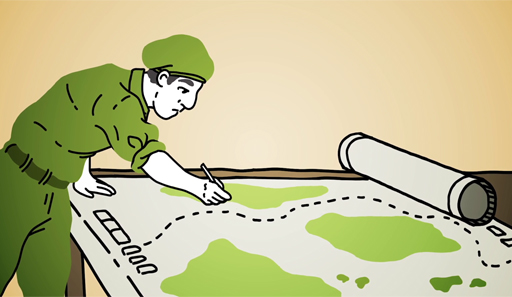1 Introduction to the basic dilemma in war
- What would you do if you had the power to decide whether Notre-Dame will be destroyed or whether numerous lives are put at risk?
- What would you do if you had to choose between saving the lives of a group of civilians or protecting a museum full of priceless paintings and artefacts?
These questions might seem far-fetched but these situations do arise in the context of armed conflict. Military commanders need to make difficult decisions, weighing up the costs associated with various plans of action to determine the best way forward. Typically, these costs take the form of increased risks or harm to civilians or soldiers. However, sometimes commanders are also expected to consider the value of cultural heritage in their strategic decision-making.
Activity 1 Military dilemmas involving heritage
Watch the following video and think about how you would respond as a commanding officer in each of the given examples.

Transcript: Video 1 Example military dilemmas involving heritage
Discussion
These examples are fictional but realistic. In each one the commanding officer has to decide between courses of action. Some of these involve greater risks of harm to cultural heritage; others involve greater risks of harm to civilians or military personnel. Selecting one option instead of another appears to demand that the commanders compare and weigh up the value of heritage against the value of human life.
Given this, identifying the best choice is not easy. As you saw in Week 1, these kinds of decision can be philosophically challenging, even outside the context of an ongoing battle. And yet, soldiers and officers are faced with such decisions, and must often choose with imperfect knowledge of their circumstances. The destruction of the Monte Cassino Abbey during the Second World War is a real-life case which exemplifies this problem.
